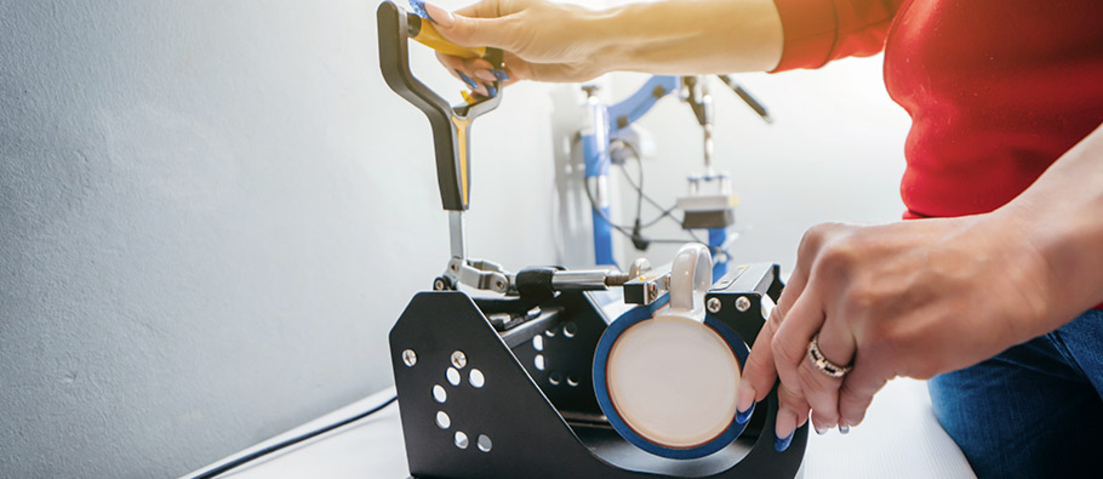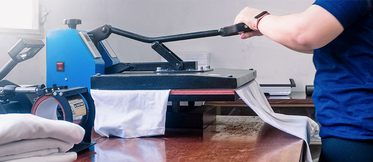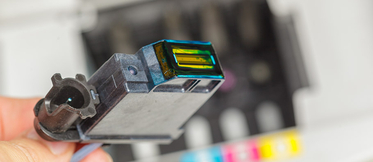How to save money when sublimating

Any time is a good time to save a few euros, so pay attention. There are many details that contribute to increase the costs in the sublimation process: choosing the right materials, keeping the printer heads clean or not wasting energy (the electricity bill is not to waste). As you know, sublimation, very fashionable to customize clothing and objects for its simplicity and effectiveness, requires an initial investment and certain expenses that are maintained over time (paper, ink and electricity). Is there a way to reduce costs while maintaining the quality of the results?
Is there a way to save money when sublimating?
Although there are unavoidable expenses when carrying out any sublimation job, there are things we can keep in mind so we don't throw money away. First of all, what do we need to sublimate? A printer, sublimation ink, sublimation paper, an iron and, of course, the object or garment we are going to print. We must think about what we want to sublimate and what will be our production volume. Based on this, we will not buy, for example, a multifunction iron if we only want to sublimate mugs.
It is also essential to take into account the characteristics that sublimatable materials must meet in order not to buy 50 T-shirts that will not be useful in the end. Remember that, in the case of fabrics, they must be composed mostly of polyester and it is preferable that they are white, otherwise, the colors will be altered. If we are going to sublimate mugs, ceramics or any other non-textile product, they should always have a polyester coating.
The proper maintenance of the printer, the plate and the paper are also essential to extend its life and not waste energy or ink. How do you have to do it? Don't hurry, we'll explain it to you.
Tricks to save when sublimating
Once you have the printer and the transfer plate, the recurring expenses will be ink and electricity. But before we stop to explain how you can save on both, remember that poor maintenance of the printer or the plate can damage them before their time causing you to have to get new machinery. For sublimation, any inkjet printer will do, but keep in mind that if you use the printer with normal ink instead of sublimation ink, it will no longer work for sublimation.
As for the plate, avoid damage by cleaning it regularly and preventing ink buildup. Also, if instead of placing the object or garment you are going to sublimate in the center of the plate you place it in one of the corners, over time it will produce wear and tear that will unbalance the guide.
And don't forget the paper, although it is a cheap product you don't have to throw it anywhere and let it spoil. Store it in the same packaging in which you buy it and in a dry place, away from humidity and heat sources that can damage it.
Save ink
- Opt for compatible sublimation inks, much cheaper than those sold by printer brands and with equally good results. In Webcartridge you will find the PixColor inks, the brand with the best quality-price ratio on the market.
- Many times, the printer ejects more ink than the paper can absorb and, therefore, it is wasted. To avoid this, you must adjust the ink limit in the printer driver. To determine exactly what percentage we set the limit at without losing quality we must first print a test pattern.
- Do not turn the printer off and on all the time, it not only consumes more energy, it will also activate the cleaning process automatically every time you start it up consuming ink unnecessarily.
Save electricity
Both the printer and the transfer press consume energy, however, there are certain things you can do to avoid a stroke when the bill arrives.
- Plan your work and, as we said in the previous point, do not turn the printer off and on several times in the same day.
- The newest printers incorporate energy saving systems. If yours has the hibernation option, activate it. It consumes less and is only activated when it is time to print.
- Planning is also essential when using the plate. It would be best not to have to turn it on and off continuously, as it will consume more electricity to reach the right temperature. Of course, when you are not using it, turn it off and unplug it.
- Finally, and this advice extends to all areas, analyze your bill to not have contracted more power than you need. This would mean an absurd cost overrun on each bill.



